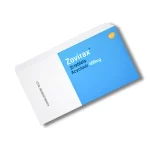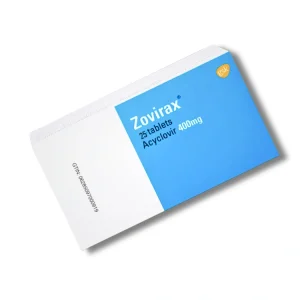What is Zovirax?
Zovirax is a well-established antiviral medication whose active constituent is acyclovir. This pharmaceutical agent is specifically designed to combat infections caused by certain members of the herpes virus family. Its primary utility lies in managing conditions such as genital herpes, which involves outbreaks of sores in the genital area; cold sores, also known as fever blisters, that typically appear around the mouth; shingles, a painful rash with blisters caused by the reactivation of the chickenpox virus; and chickenpox itself, a common childhood illness characterized by an itchy, spotty rash. Zovirax does not cure herpes infections, as the viruses can remain dormant in the body. Instead, it works to lessen the severity and duration of outbreaks, reduce the frequency of recurrences in some cases, and alleviate associated symptoms like pain and itching. The medication is available in various formulations to suit different types and locations of infection.
The development of acyclovir, and consequently Zovirax, marked a significant advancement in antiviral therapy, providing a targeted approach to viral replication. It operates by interfering with the virus’s ability to multiply, thereby helping the body’s immune system to control the infection more effectively. Its application extends from treating acute episodes to, in some instances, providing long-term suppressive therapy to prevent frequent outbreaks.
Mechanism of Action
The therapeutic effect of Zovirax stems from acyclovir’s precise interference with viral DNA synthesis. Herpes viruses rely on making numerous copies of their genetic material (DNA) to replicate and spread. Acyclovir is a synthetic nucleoside analogue, meaning it is a molecule that structurally resembles one of the natural building blocks (nucleosides) that viruses use to construct their DNA strands.
For acyclovir to become active, it must first undergo a series of chemical transformations called phosphorylations, effectively “arming” it. Crucially, the very first of these arming steps is preferentially carried out by an enzyme produced by the herpes virus itself, known as viral thymidine kinase. Once fully armed (as acyclovir triphosphate), it can then be incorporated by another viral enzyme, viral DNA polymerase, into the growing strand of viral DNA. When acyclovir triphosphate is inserted into the viral DNA chain, two critical things happen: first, because it lacks a specific chemical group (a 3′-hydroxyl group) that is necessary for the next DNA building block to attach, it acts as a “chain terminator,” bringing the construction of that viral DNA strand to an abrupt and permanent halt. Second, the viral DNA polymerase enzyme becomes irreversibly bound to this terminated chain, essentially becoming trapped and unable to continue its replication work elsewhere.
To visualize this, imagine a highly specialized counterfeiting operation (the herpes virus) that uses a unique, automated assembly line (viral DNA replication machinery) to produce long chains of counterfeit currency (viral DNA). This assembly line requires specific, sequentially numbered links (nucleosides) to form a complete chain. The counterfeiters also employ a special, proprietary tool (viral thymidine kinase) to prepare each link before it’s added to the chain. Zovirax (acyclovir) acts like a batch of subtly defective links, designed to look almost identical to the genuine ones. The counterfeiters’ special tool (viral thymidine kinase) readily picks up and prepares these defective links. When one of these flawed links (acyclovir triphosphate) is inserted into a growing chain of counterfeit currency by the assembly line’s main robot (viral DNA polymerase), the defect prevents any further links from being attached. The chain is broken. Moreover, the main robot becomes jammed by this faulty link, unable to move on to start new chains. Because the counterfeiters’ special tool is primarily responsible for activating these defective links, the legitimate currency production factories (host cells) in the city, which use different tools, are largely unaffected by these flawed components.
Brand vs. Generic
Zovirax is the original brand name under which acyclovir was first introduced and marketed by GlaxoSmithKline. As a pioneering antiviral medication, it established the efficacy and safety profile of acyclovir for treating various herpes virus infections. Following the expiration of its patent protection, numerous pharmaceutical companies began to manufacture and market generic versions of acyclovir.
These generic alternatives contain the identical active pharmaceutical ingredient, acyclovir, in the same dosage forms and strengths as the brand-name Zovirax products (e.g., tablets, capsules, topical preparations, intravenous solutions). Regulatory bodies, such as the U.S. Food and Drug Administration (FDA), mandate that generic drugs demonstrate bioequivalence to their brand-name counterparts. This ensures that they are absorbed and utilized by the body in a comparable manner, offering the same therapeutic benefits and safety profile. The availability of generic acyclovir has significantly increased access to this antiviral treatment and has generally made it a more affordable option for patients and healthcare systems.
Available Forms
Zovirax (and its generic acyclovir equivalents) is formulated in a variety of dosage forms to cater to different types of herpes virus infections, their severity, and patient needs. This versatility allows for targeted treatment, whether the infection is localized on the skin, affecting mucous membranes, or requires systemic intervention:
- Oral Tablets: These are commonly prescribed for systemic treatment of genital herpes, shingles, and chickenpox, and come in strengths such as 200 mg, 400 mg, and 800 mg.
- Oral Capsules: Another option for systemic oral administration, typically available in a 200 mg strength.
- Oral Suspension: A liquid formulation (usually 200 mg/5 mL) which is particularly useful for pediatric patients (e.g., for chickenpox) or for adults who have difficulty swallowing tablets or capsules.
- Topical Ointment (5%): Designed for direct application to external genital herpes lesions to help speed healing and reduce viral shedding from the sores.
- Topical Cream (5%): Often used for recurrent herpes labialis (cold sores on the lips and face) to be applied at the first sign of an outbreak.
- Intravenous (IV) Injection: Reserved for more severe herpes infections, particularly in immunocompromised individuals, or for serious conditions like herpes simplex encephalitis (infection of the brain) or neonatal herpes. It ensures direct and rapid delivery of acyclovir into the bloodstream.
Unique Features
Zovirax (acyclovir) possesses several characteristics that underscore its importance in antiviral medicine:
- Selective Viral Activation: A key distinguishing feature is its mechanism of action that relies on initial phosphorylation (activation) predominantly by viral thymidine kinase. This selective activation means the drug is more readily converted to its active form within virus-infected cells compared to uninfected host cells, contributing to its targeted effect and relatively good safety profile.
- Broad Antiherpetic Spectrum within its Class: While specific to herpes viruses, acyclovir is effective against a range of common and clinically significant herpesviruses, including Herpes Simplex Virus type 1 (HSV-1, typically causing cold sores), Herpes Simplex Virus type 2 (HSV-2, typically causing genital herpes), and Varicella-Zoster Virus (VZV, causing chickenpox and shingles).
- Pioneering Nucleoside Analogue: Acyclovir was one of the first highly effective and selective antiviral drugs developed, paving the way for subsequent nucleoside analogues and antiviral research. Its success established a proof of concept for targeting viral enzymes.



Man, I always keep a tube of that Zovirax cream handy. Soon as I feel that stupid tingle starting up, you know, the one that means a cold sore’s brewing, I dab some of that on. Nine times out of ten, it stops it from really blowing up, or at least it’s gone in half the time it used to take. Lifesaver for me, honestly.
Thank you for this information!